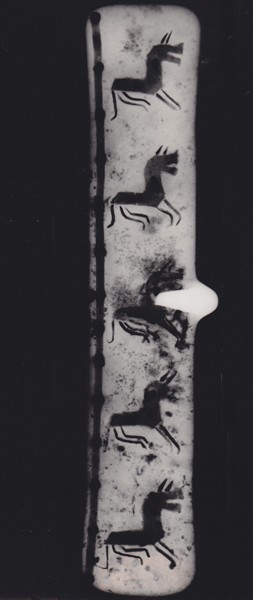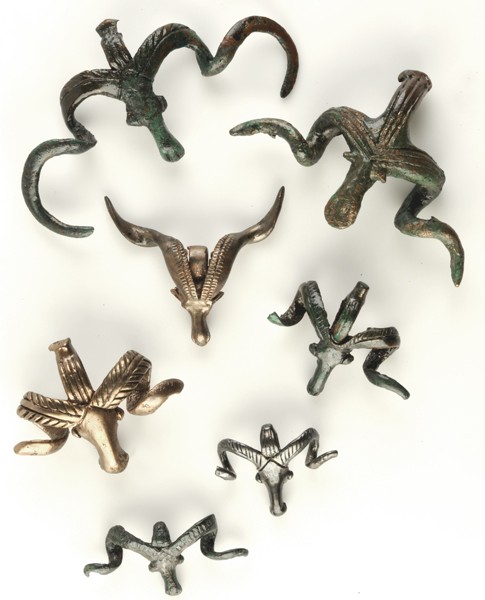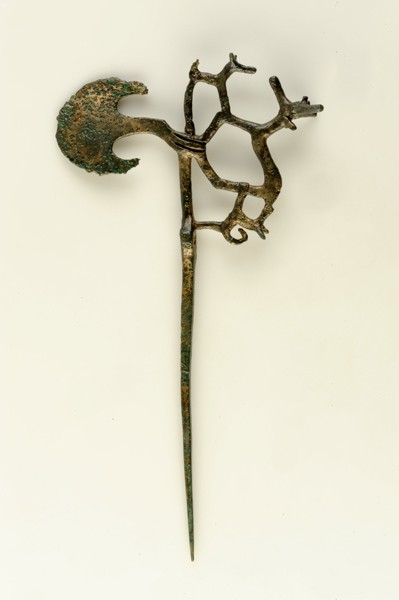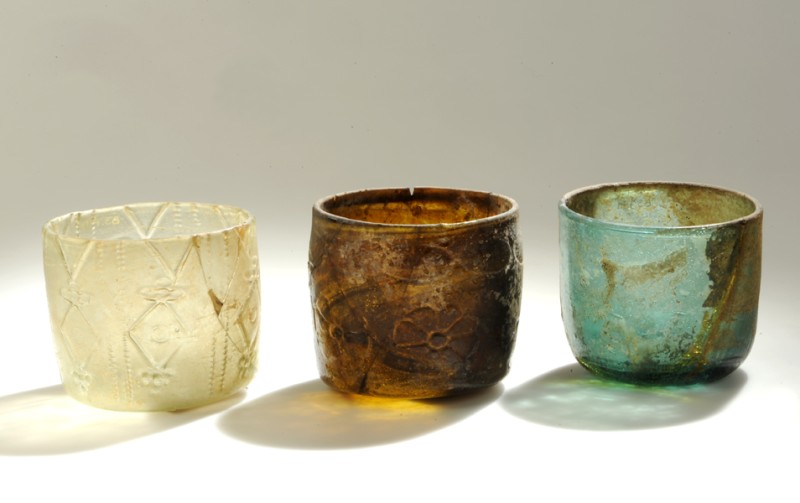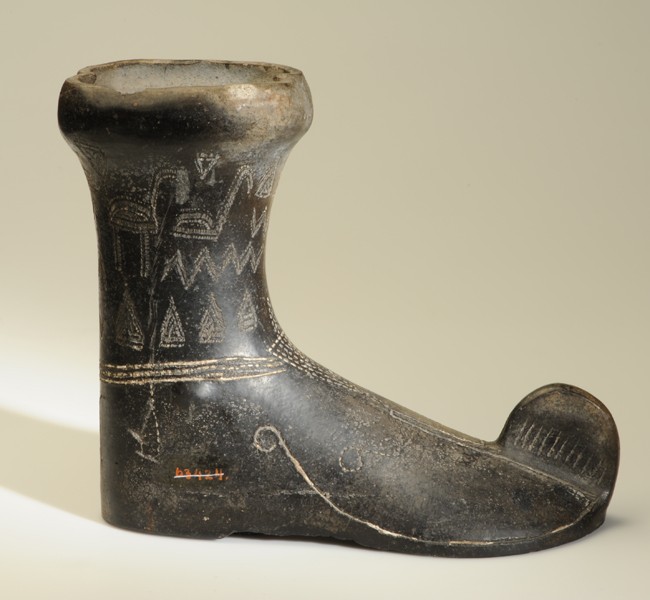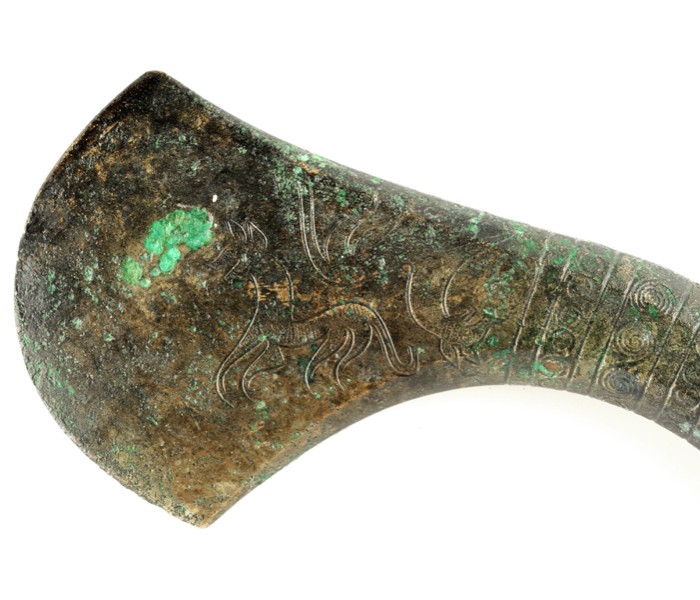The finds of the Caucasus collection were purchased between 1881 and 1893 by Franz Heger (1884-1919 director of what was then
the Anthropological-Ethnographic Department). At the 5th All-Russian Archaeological Congress in Tbilisi in 1881, foreign researchers
first became aware of the rich finds which had recently been discovered, especially those of the Late Bronze Age Koban culture.
This aroused their interest in the archaeology of the Caucasus. Franz Heger was able to acquire the first collection of Caucasian
antiquities for the Natural History Museum.
Prehistoric finds
An important find dating from the Bronze Age was discovered in Faskau. It comprises characteristic bronze axes and decorative
bronze fibulae, some of which are oversized.
The best-known culture of the late Bronze Age and Iron Age is the Koban culture (12th-5th century BC), named after the famous
Koban burial site. This culture can be compared with the Iron Age Hallstatt culture in Central Europe. Typical finds from
this culture include richly decorated axes and solid metal belt hooks with engraved or iron inlaid decorations. Many items
from the Koban culture include depictions of animals, some of which are extremely realistic, such as numerous pendants with
rams’ heads.
In 1898 the famous Austrian entomologist and explorer Hans Leder from Jauernig
(today Javorník) gave to the Caucasus collection a small collection of clay vessels from Late Bronze Age/Early Iron Age graves
belonging to the Chodžaly-Kedabek culture (11th-9th century BC) in Helenendorf/Chanlar (Azerbaijan). Particularly noteworthy
here is a high-quality vessel in the shape of a boot, richly decorated with white incrustations. The intricate decoration
on this example recreates the seams and decorative elements of leather boots. The beak-shaped shoe is similar to objects from
the Hittite culture.
Further important finds in the Caucasus collection date from the Sarmatian period (4th century BC until 4th century AD).
Early medieval finds
The early medieval finds of the Caucasus collection come mainly from two sites in the mountainous part of the Northern Caucasus:
Čmi and Koban.
The entire early medieval history of the Northern Caucasus region is closely connected with the history of the Alans. The
Alans were an Iranian-speaking tribe related to the Sarmatians. They were driven out of their native grazing grounds between
the Don river and the Caspian Sea and partially destroyed by the Huns as they moved westwards in the 470s. Some fled further
west with the Goths, while others joined the Huns, who were victorious everywhere at that time. Another group remained in
the Danube region and the Northern Caucasus. This victory of the Huns over the Alans marked the beginning of the great migration
of peoples.
The collapse of the Hun Empire, from the second half of the 5th century onwards, opened up the way to Europe for other Turkic
peoples. This meant the Alans in the Caucasus were soon surrounded by various Turkic-speaking tribes. It did not take long
for the Khazars to rise up and become a great power. Their victory over Magna Bulgaria (around 670) made them one of the Alans'
closest and most powerful neighbours. At the height of its power, the Khazarian Khaganate certainly included the mountainous
areas in the Northern Caucasus, including the sites of Čmi and Koban. Many of the most opulent early medieval burial sites
date from this period, the 9th century. It is likely that the Alans, who had been resident here for a long time, were entrusted
with protecting the southern border of the Khazarian Khaganate. Their ties to the Khaganate were manifested in their equipment,
i.e. mainly their weapons and the bronze buckles on their belts, but also in some pieces of jewellery.
The sabre from this catacomb is widely known. This is probably the most complete example of its kind – of which there are
relatively few. These sabres are generally called "Khazarian" sabres. They are connected with the Saltovo-Majaki culture in
the Don region and date from the 8th-9th century. At that time, as was the case with all nomads on horseback in the early
medieval period, men would wear richly decorated belts with numerous hanging side straps.



